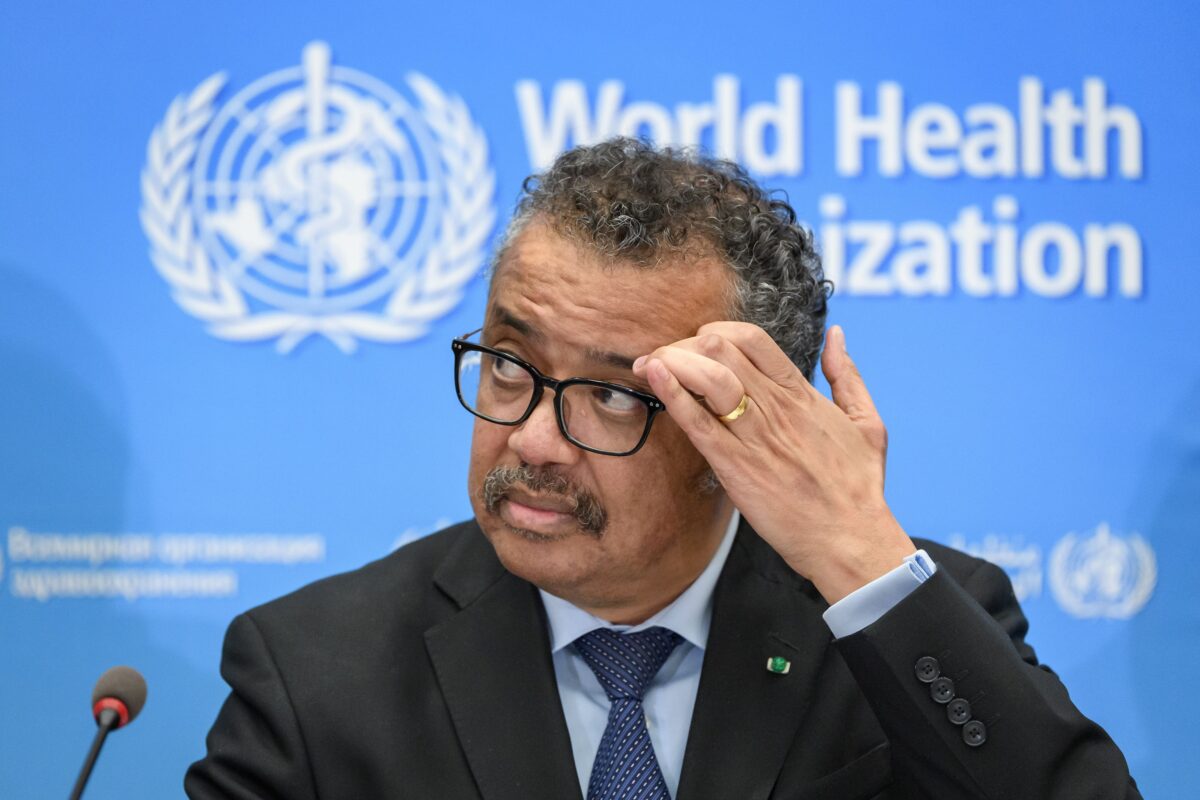The World Health Organization (WHO) has warned experts not to rely solely on the results of a PCR test to detect the CCP virus.
In an updated guidance published on January 20, the WHO said that laboratory experts and health professionals should also consider patient history and epidemiological risk factors together with the PCR test in diagnosing the CCP (Chinese Communist Party) virus ).
The new guidance can result in significantly fewer daily cases.
“Most PCR assays are indicated as a diagnostic aid, so healthcare professionals should consider any results in combination with the time of sampling, type of sample, specific test data, clinical observations, patient history, confirmed status of any contacts and epidemiological information, ”says the guidance.
It is not clear why the health agency waited more than a year to launch the new guideline. WHO did not respond to an Epoch Times survey.
Scientists and doctors have raised concerns for many months about overconfidence and the misuse of the PCR test as a diagnostic tool, since it cannot differentiate between a live infectious virus and an inactivated virus fragment that is not infectious.
In addition, the high cycle limit values of most PCR tests – at 40 cycles or more – increase the risk of false positives. A higher threshold value indicates less viral load and that the person is less likely to be infectious, while a person with a lower cycle threshold value has a higher viral load or is more infectious.
The WHO did not specify what the cutoff value should be for a positive diagnosis, but said only “determining whether [a] manual adjustment of the PCR positivity limit is recommended by the manufacturer. “

However, he clarified that when the prevalence of the CCP virus is low, “the risk of false positive increases”, which means that “the probability that a person with a positive result (SARS-CoV-2 detected) is actually infected with SARS- CoV-2 decreases as prevalence decreases, regardless of claimed specificity [of the PCR test]. “
SARS-CoV-2 is the scientific name for the CCP virus that causes COVID-19 disease.
The Center for Disease Control and Prevention (CDC) says its CRP tests have a cycle cut limit of 40 cycles. The federal agency finally included information about the cycle limit value in its COVID-19 Lab FAQ on November 12, 2020.
But many medical experts consider a cutoff value of 40 cycles to return only false positives, as samples that go through many amplification cycles will pick up negligible RNA sequences, regardless of whether the virus is inactivated or the viral load is too low to represent any problem.
Before the CCP virus pandemic, for individuals to be considered a case, they must test positive and show clinical signs and symptoms. But to be counted as a case of CCP virus, only a positive PCR test is needed. And no matter how many times an individual is tested, each positive test is counted as a separate case.
WHO is now warning that a positive PCR test that “does not match the clinical presentation” should be verified by taking “a new sample” and testing it again.
This advice can also help to reduce cases of CCP virus in hospitals, as it more clearly defines who is considered a hospitalized case.
The Director of International Relations for the United Kingdom’s National Health Service (NHS), Dr. Layla McCay, confirmed the talkRADIO that a percentage of hospitalized patients officially counted as positive cases were actually being treated for different diseases unrelated to COVID-19. They had only tested positive for the disease in the hospital, without showing any symptoms.
Dr. Layla McCay, director of the NHS Confederation, confirms to Julia that the hospital numbers for “Covid patients” include patients who are not being treated for Covid, but simply tested positive while being treated for something else.@ JuliaHB1 | @LaylaMcCay pic.twitter.com/xSud6LW13M
– talkRADIO (@talkRADIO) January 5, 2021
“It is correct that in the hospital, people who test positive for COVID will experience the full range of symptoms,” said McCay. “Some will take this as an aside to some other problem for which they are in the hospital.”
On the day following the release of his new guidance by WHO, President Joe Biden’s chief medical advisor, Dr. Anthony Fauci, said the United States would join the organization again.
“As such, I am honored to announce that the United States will continue to be a member of the World Health Organization,” said Fauci. “Yesterday, President Biden signed letters depicting the previous government’s announcement to withdraw from the organization, and these letters were forwarded to the Secretary-General of the United Nations and to Dr. Tedros, my dear friend.”
Tedros Adhanom Ghebreyesus is the Director-General of WHO.
“The United States also intends to fulfill its financial obligations to organizations,” added Fauci.
In July last year, the Trump administration withdrew from WHO because of its supposed role in helping the Chinese communist regime cover up the severity of the CCP virus.
There were mixed responses from Congress about Biden’s decision to rejoin WHO.
Congresswoman Lauren Boebert (R-Colorado) introduced a bill (pdf) on January 21 to “prohibit the availability of United States contributions to the World Health Organization until Congress receives a full report on China and the pandemic COVID-19, and for other purposes. “
She said in a statement: “WHO is focused on China and favors Beijing at every step. There is no reason for US taxpayers to contribute more than $ 400 million annually to an organization that covered China and failed to stem the spread of the COVID-19 pandemic. “
Before former President Donald Trump withdrew from WHO, the United States was the largest contributor to the health agency, according to State Department statistics.
